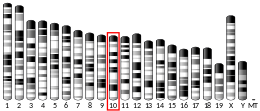
ITCH is a HECT domain–containing E3 ubiquitin ligase that is ablated in non-agouti-lethal 18H mice. Itchy mice develop a severe immunological phenotype after birth that includes hyperplasia of lymphoid and hematopoietic cells, and stomach and lung inflammation. In humans ITCH deficiency causes altered physical growth, craniofacial morphology defects, defective muscle development, and aberrant immune system function. The ITCH gene is located on chromosome 20 in humans. ITCH contains a C2 domain, proline-rich region, WW domains, HECT domain, and multiple amino acids that are phosphorylated and ubiquitinated.
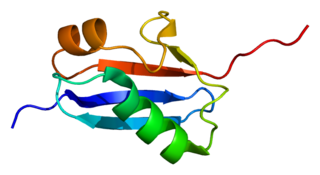
Small ubiquitin-related modifier 2 is a protein that in humans is encoded by the SUMO2 gene.

Ubiquitin-conjugating enzyme E2 D1 is a protein that in humans is encoded by the UBE2D1 gene.

Ubiquitin-conjugating enzyme E2 D2 is a protein that in humans is encoded by the UBE2D2 gene.

RING-box protein 2 is a protein that in humans is encoded by the RNF7 gene.

COP9 signalosome complex subunit 8 is a protein that in humans is encoded by the COPS8 gene.

Ubiquitin-conjugating enzyme E2 D3 is a protein that in humans is encoded by the UBE2D3 gene.

E3 ubiquitin-protein ligase UBR5 is an enzyme that in humans is encoded by the UBR5 gene.

Ubiquitin/ISG15-conjugating enzyme E2 L6 is a protein that in humans is encoded by the UBE2L6 gene.

NEDD4-like E3 ubiquitin-protein ligase WWP2 also known as atrophin-1-interacting protein 2 (AIP2) or WW domain-containing protein 2 (WWP2) is an enzyme that in humans is encoded by the WWP2 gene.

Protein deltex-2 also known as E3 ubiquitin-protein ligase DTX2 is an enzyme that in humans is encoded by the DTX2 gene.
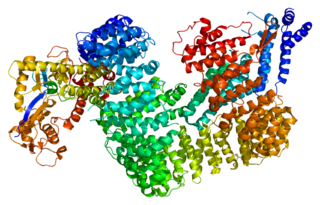
Cullin-associated NEDD8-dissociated protein 1 is a protein that in humans is encoded by the CAND1 gene.

E3 ubiquitin-protein ligase NRDP1 is an enzyme that in humans is encoded by the RNF41 gene.

Protein deltex-1 is a protein that in humans is encoded by the DTX1 gene.
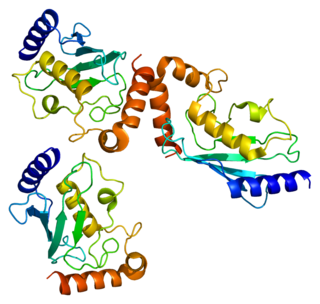
Ubiquitin-conjugating enzyme E2 E1 is a protein that in humans is encoded by the UBE2E1 gene.
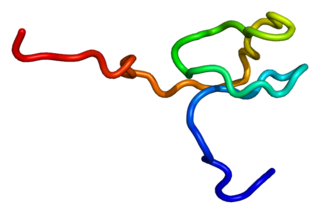
RanBP-type and C3HC4-type zinc finger-containing protein 1 is a protein that in humans is encoded by the RBCK1 gene.

E3 ubiquitin-protein ligase RFWD2 is an enzyme that in humans is encoded by the RFWD2 gene.

E3 ubiquitin-protein ligase RNF128 is an enzyme that in humans is encoded by the RNF128 gene.

HECT, C2 and WW domain containing E3 ubiquitin protein ligase 1 is a protein that in humans is encoded by the HECW1 gene. In human it has 1606 amino acids and isoelectric point of 5.18.

Deltex E3 ubiquitin ligase 3L is a protein that in humans is encoded by the DTX3L gene. It functions as an ubiquitin ligase (E3), and is over-expressed in chemotherapy-resistant lymphomas. It is a member of the DTX family of proteins. Among other roles it has a function in DNA damage repair.


